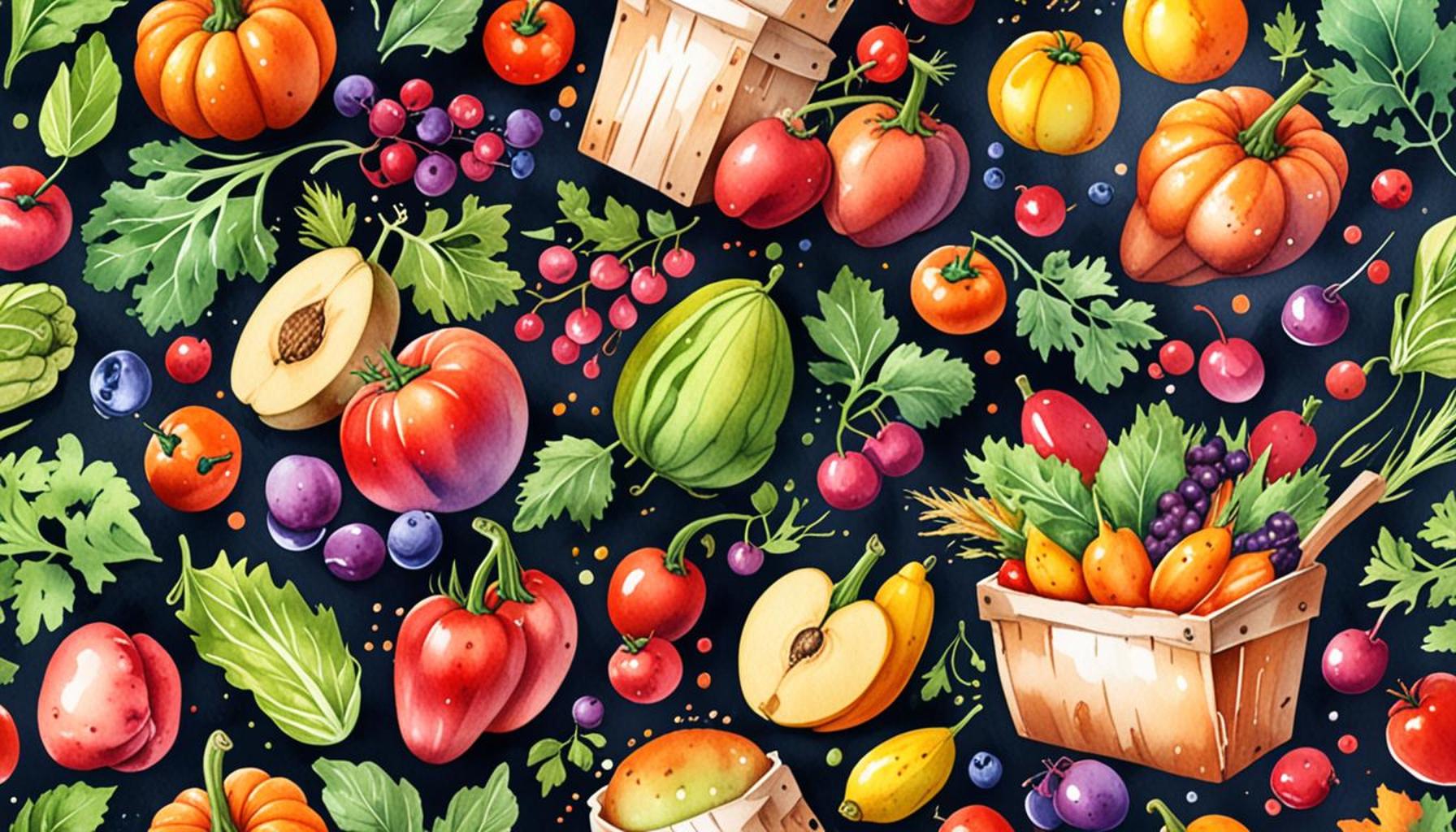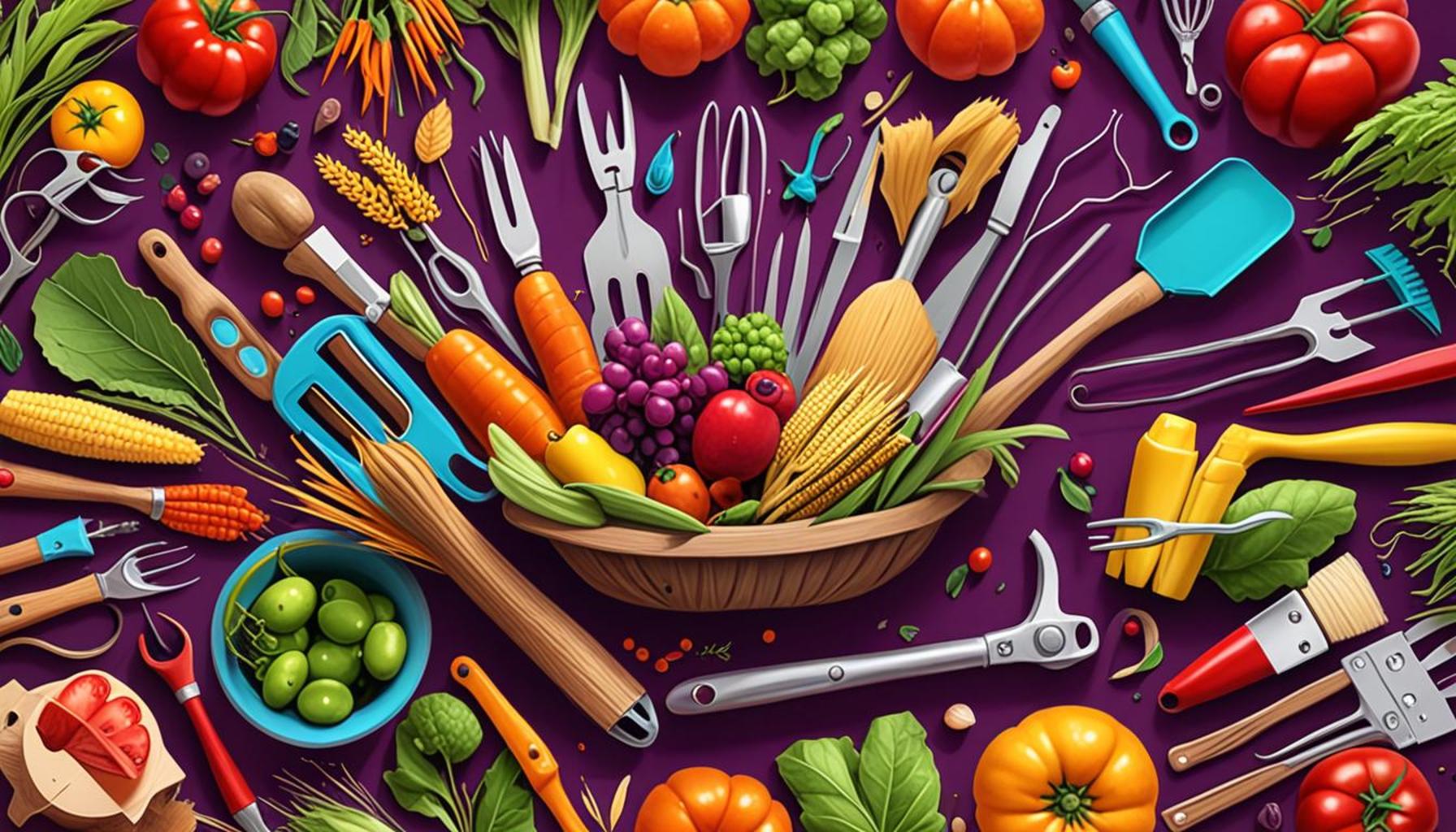Layered Harvesting: Techniques for Harvesting at Different Growth Stages and Maximizing Space Usage

Unlocking the Potential of Layered Harvesting
In today’s fast-paced world, maximizing yield while minimizing space has become a crucial aspect of sustainable agriculture. Layered harvesting offers innovative techniques that allow gardeners and farmers alike to harvest crops at various growth stages. This method not only enhances productivity but ensures efficient use of land.
One of the most effective methods to implement layered harvesting is through staggered planting. By sowing seeds at different intervals—say, every two weeks—you create a succession of crops that can be harvested in phases. For example, if you plant lettuce, carrots, and radishes in intervals, you’ll have a steady supply of fresh greens and roots, continually available over the growing months. This gradual harvest can significantly reduce the likelihood of overwhelming yourself with all produce maturing at once, thereby maintaining consistent access to fresh ingredients.
Another transformative approach is companion planting. This practice involves growing compatible plants together, which can enhance both productivity and plant health. For instance, growing marigolds alongside tomatoes can deter pests, while also attracting beneficial insects. This synergy not only frees up space but also nurtures a healthier garden ecosystem that can yield higher quality crops. Plants like basil and peppers also flourish when planted in close proximity, making optimal use of the limited space available, especially in urban gardens or tiny backyard plots.
Vertical gardening emerges as a stellar solution, particularly in cities where ground area is scarce. By utilizing trellises, wall-mounted planters, or hanging gardens, you can cultivate climbing crops such as cucumbers or peas that thrive upward instead of outward. This approach not only creates an intriguing aesthetic but also significantly augments the amount of produce harvested from a small footprint. Vertical gardening promotes airflow around the plants, reducing plant diseases and improving overall yield.
These layered harvesting techniques empower growers to make the most of their available space, especially in urban environments where land is limited. As cities expand, the need for innovative agricultural strategies becomes paramount, and embracing layered harvesting can lead to a flourishing ecosystem that supports plant health and enhances biodiversity. Engaging with these practices not only aids in self-sustainability but connects individuals to their food sources.
From urban gardens to large-scale farms, understanding the dynamics of harvesting at different growth stages can revolutionize your approach to agriculture. With the right knowledge and techniques, you can cultivate a more sustainable and productive gardening experience. Dive deeper into the world of layered harvesting, and discover how it can transform not just your gardening practices, but also contribute positively to the environment. Discovering and implementing these strategies affords both novice and experienced gardeners the chance to redefine how they view their relationship with food production.
DISCOVER MORE: Click here to learn seasonal pest control techniques
Essential Techniques for Effective Layered Harvesting
Layered harvesting is not merely a method; it represents a transformative mindset in modern agriculture. By embracing techniques that cater to various growth stages, growers can significantly enhance their yield. Here are several pivotal methods that exemplify how to maximize space usage while optimizing crop output:
1. Successive Harvesting
Successive harvesting, often defined as multiple-crop planting, allows gardeners to stagger plantings and ultimately harvest crops at their peak. This technique can be particularly advantageous with quick-growing vegetables, such as:
- Lettuce: Quick to mature, allowing for continuous harvest every few weeks.
- Radishes: Typically ready in just a few weeks, they can be planted in rotating cycles.
- Spinach: Thrives in cooler weather and can be harvested multiple times as it regrows.
By incorporating these fast-growing vegetables into your harvest schedule, you can enjoy a continuous supply of fresh produce throughout the season, minimizing waste and ensuring your garden remains lush and productive.
2. Intercropping Strategies
Intercropping, or the practice of planting different crops in proximity, is another excellent layered harvesting technique. This method promotes a diverse crop ecosystem, leading to healthier plants and enhanced resilience against pests. Here are some combinations to consider:
- Corn, Beans, and Squash: Known as the “Three Sisters,” this traditional method utilizes vertical space, with corn providing support for beans, while squash covers the ground.
- Tomatoes and Basil: While the basil enhances the flavor of tomatoes, it also helps in repelling pests.
- Carrots and Onions: Their differing root depths minimize competition for nutrients while maximizing soil usage.
Implementing intercropping helps in maximizing crop yield and can lead to a more balanced ecosystem within your garden, resulting in higher-quality produce.
3. Utilizing Microclimates
Understanding and manipulating microclimates is crucial in layered harvesting. Certain areas within a garden may receive more sunlight, shade, or moisture, providing unique conditions that can be capitalized upon. For instance:
- A southern-facing wall can act as a heat sink, perfect for heat-loving plants.
- Shady areas under tall crops provide a cooler environment suitable for shade-tolerant varieties like leafy greens.
- Moisture-retaining areas can benefit water-loving crops like cucumbers or melons.
By identifying these microclimates and placing appropriate crops within them, growers can optimize their available space, yielding impressive results from each section of the garden.
As these techniques unveil the potential for layered harvesting, it’s clear that a strategic approach can lead to abundant rewards. Optimizing your growing space not only increases productivity but also enriches the gardening experience, allowing both novice and seasoned gardeners to enjoy a more sustainable relationship with their land.
| Technique | Advantages |
|---|---|
| Staggered Planting | Allows for a continuous supply of crops and utilizes space more effectively by maximizing harvest time. |
| Intercropping | Promotes biodiversity and enhances pest management, leading to healthier crop yields. |
Layered harvesting techniques present a revolutionary approach to farming that provides multiple benefits, notably in space utilization and yield optimization. By employing methods such as staggered planting, the cultivation process can transform ordinary gardens into dynamic ecosystems where plants are harvested at various growth stages. This technique enhances not only the rhythm of harvest but also the economic viability of the farming operation. Intercropping further enriches the layered harvesting experience. Planting compatible crops together can lead to increased productivity and a more resilient agricultural practice. Such combinations not only save precious land space but also improve soil health and microhabitats for beneficial organisms. This practice aligns with sustainable farming efforts, attracting environmentally conscious farmers looking for productive and restorative methods. These techniques illustrate a commitment to innovation in agriculture, urging readers to explore the profound implications of layered harvesting on future farming practices.
DISCOVER MORE: Click here to learn about beneficial insects
Advanced Techniques for Layered Harvesting Success
As the agricultural landscape continues to evolve, layered harvesting emerges as a vital practice characterized by innovation and adaptability. Farmers and gardeners seeking efficient methods to enhance productivity and leverage every inch of their growing spaces can explore advanced techniques that further optimize their yields.
4. Vertical Gardening
Vertical gardening represents a revolutionary approach to maximizing crop production in limited spaces, particularly in urban environments. By utilizing vertical structures, such as trellises, walls, or shelves, gardeners can cultivate a variety of plants in a fraction of the traditional footprint. This method is particularly effective for:
- Climbing plants: Beans, peas, and cucumbers thrive in vertical settings, allowing their vines to grow upwards and save ground space.
- Strawberries: These can be grown in vertical planters, making maintenance easier and air circulation better for healthier fruit.
- Herbs: Placing herbs like thyme and rosemary on vertical racks not only saves space but also enhances accessibility.
By embracing vertical gardening techniques, growers can cultivate additional layers of crops, optimizing light exposure and reducing soil competition.
5. Crop Rotation and Companion Planting
Crop rotation and companion planting are traditional practices that can significantly enhance layered harvesting strategies. Crop rotation involves planting different crops in succession on the same land to maintain soil fertility and control pests. By rotating crops through different growth stages, farmers can ensure a continuous yield while promoting soil health.
Companion planting, as its name suggests, pairs plants that benefit one another, creating a symbiotic relationship. For instance:
- Marigolds and Tomatoes: Marigolds repel nematodes and other pests that threaten tomato plants.
- Basil and Peppers: Basil assists in enhancing the flavor of peppers while helping to ward off common insect pests.
- Nasturtiums and Cabbage: These flowers attract aphids away from cabbage and other brassica family members.
Together, crop rotation and companion planting turn layered harvesting into a multifaceted approach, enhancing ecological balance while increasing food production potential.
6. Utilizing Raised Beds and Planters
Raised beds and planters offer another innovative technique in the realm of layered harvesting. By elevating the growing area, these structures improve drainage and soil quality while allowing for better organization of plant layers. The benefits include:
- Soil Control: Gardeners can create optimal soil conditions tailored to specific plant types, improving overall health.
- Accessibility: Raised beds reduce the need for bending and reaching, making gardening more accessible for all ages and physical abilities.
- Compartmentalization: Different growth stages can be organized within the raised bed, allowing for timed plantings and staggered harvesting.
Utilizing raised beds not only maximizes space but also enhances the overall efficiency of the growing process, creating a harmonious environment for layered harvesting.
As growers harness these advanced techniques, they position themselves to not just survive in a fast-paced agricultural landscape but to flourish. By interweaving practices like vertical gardening, crop rotation, companion planting, and raised beds, they enhance the potential of layered harvesting while nurturing sustainable agriculture.
LEARN MORE: Click here to discover the best plants for your garden
Conclusion: Embracing Layered Harvesting for Sustainable Growth
In an era where maximizing agricultural efficiency is paramount, layered harvesting stands out as a transformative approach that not only enhances productivity but also aligns with sustainable practices. By adopting methods such as vertical gardening, crop rotation, companion planting, and raised beds, growers can effectively utilize available space, create more diverse ecosystems, and maintain soil health. This multifaceted strategy enables farmers to harvest crops at varying growth stages, ensuring a continuous supply while reducing the risk of pest infestations and enhancing overall crop resilience.
The integration of these techniques supports sustainable agricultural practices that are increasingly vital in combating food insecurity and climate change. As urban areas expand, layered harvesting offers urban gardeners the opportunity to produce food in limited spaces, effectively contributing to local food systems.
Moreover, the growing interest in localized food production and organic gardening underscores the importance of these techniques in enhancing community food sovereignty. With advancements in gardening technology and knowledge dissemination, there has never been a more opportune time for growers—whether professional or novice—to delve into the world of layered harvesting.
In summary, layered harvesting is not merely a trend; it is a refined practice that nurtures our connection to the land while maximizing efficiency and productivity. By embracing these innovative strategies, we can pave the way for a sustainable agricultural future, where every inch of land is optimized for growth and yields, ultimately ensuring food security for generations to come.



